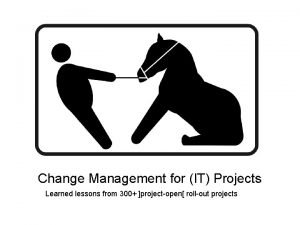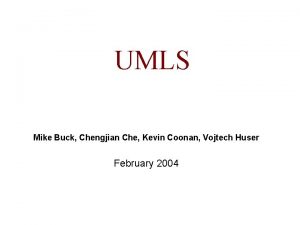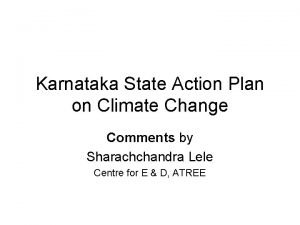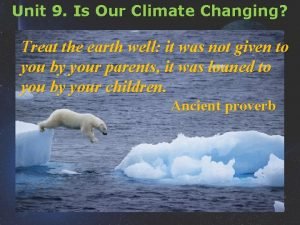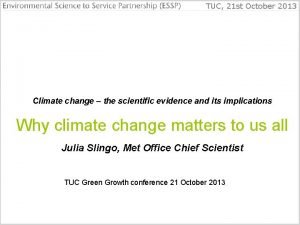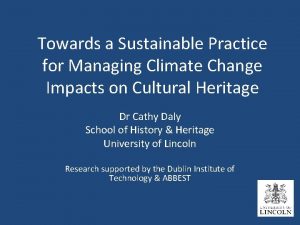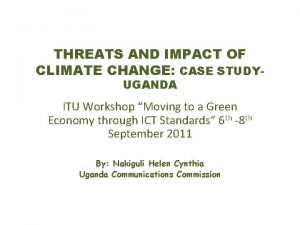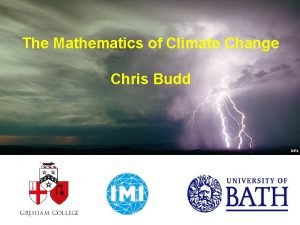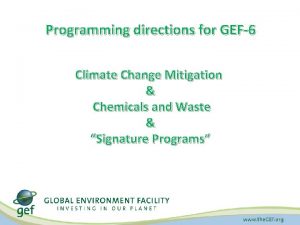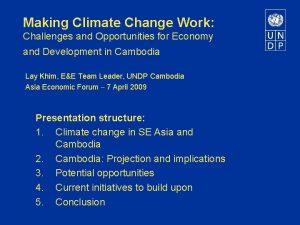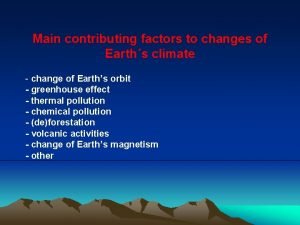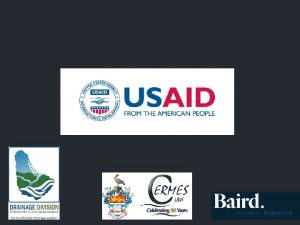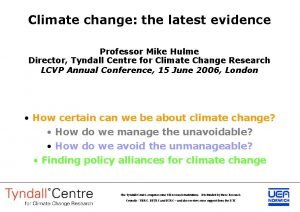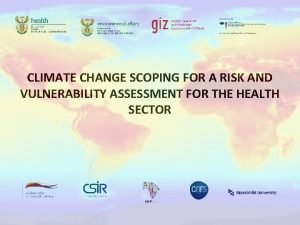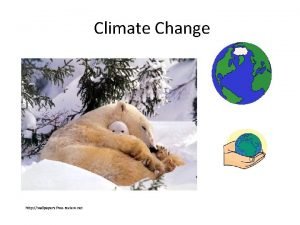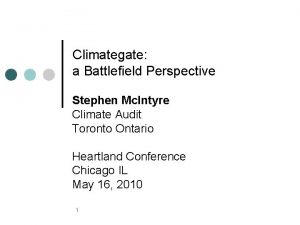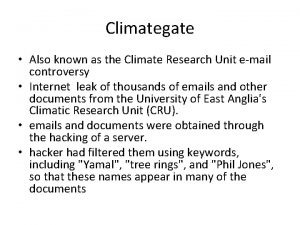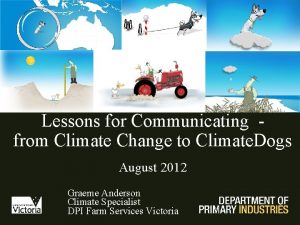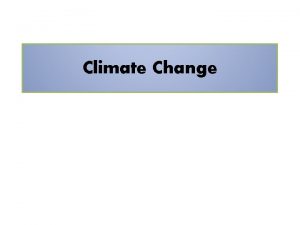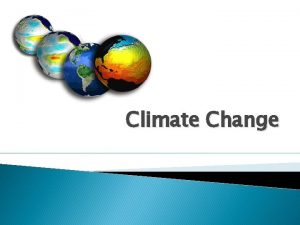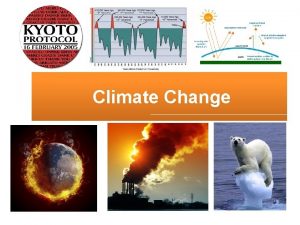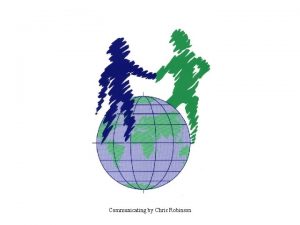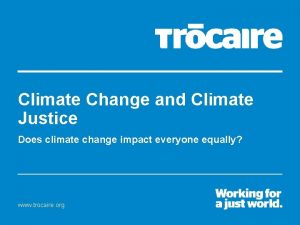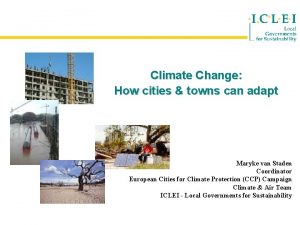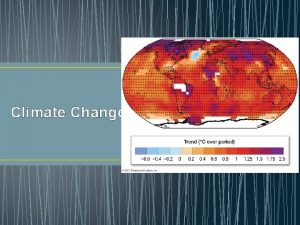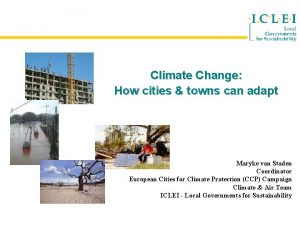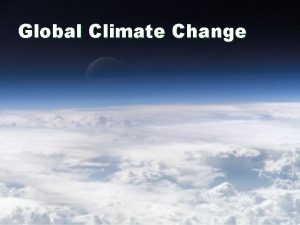Communicating climate change Some lessons from climategate Kevin
























- Slides: 24

Communicating climate change: Some lessons from climategate Kevin E Trenberth NCAR In Honor of Stephen Schneider

Climategate Refers to emails illegally hacked from Univ. East Anglia. Many unfounded charges made, statements taken out of context, misused. Some evidence of lack of openness in sharing data and violations of FOIA But 5 investigations of alleged misconduct found otherwise: scientists would not make up stuff that could be disproven by others! (Hasselmann 2010)

In late 2009: • Many emails were stolen from the University of East Anglia server involving Phil Jones. • Phil Jones and I were Coordinating Lead Authors on Chapter 3 of IPCC and so over 100 of the emails involved me. • Now known as “climategate” but really more like “swiftboating”, these emails have been used to damn the IPCC and many of us. There were several things in the emails that were obviously not for public consumption and violations of the freedom of information act were revealed. • None of mine were embarrassing to me at all, but one was highly misused and went viral. • Scientists were revealed as “human”.

AR 4 WG I: 11 Chapters 996 pages (vs TAR 882) 140 lead authors Hundreds contributors (66 Chapter 3) 2 or 3 Review editors for each chapter (26) Over 700 reviewers. Chapter 3: 2 CLAs, 10 LAs, 66 CAs 47 figures (126 panels), 8 Tables, 863 references, 102 pp. plus supplementary material 2231/ 1270 comments in scientific/governmental review 3501 total comments: all responded to in xls spread sheet (available publically)

Attacks on IPCC In late 2009 (coinciding with Copenhagen) to 2010, malicious attacks occurred on many who participated in the IPCC report, and the IPCC did not handle them well by defending its processes. The report itself has been scrutinized along with all of the comments and responses to the comments. Two minor errors have been found: both in WG II, none in WG I. -Himalayan glaciers melt (correct in WG I) -Area of Netherlands below sea level None of all the attacks have in any way changed the science or the conclusions with regard to the climate change threats.

“I can’t see either of these papers being in the next IPCC report. Kevin and I will keep them out somehow – even if we have to redefine what the peer-review literature is!” hacked email from Phil Jones (not cc’d to me). • Several emails document the detailed procedures used in IPCC AR 4 for Chapter 3 (for which I and Phil Jones were CLAs). • AR 4 was the first time Jones was on the writing team of an IPCC Assessment. The comment was naïve and sent before he understood the process and before any lead author meetings were held. It was not sanctioned by me. Both of the papers referred to were in fact cited and fully discussed in the IPCC. • Both papers had erroneous claims.

One cherry-picked email quote of mine went viral: over 110, 000 stories "The fact is that we can't account for the lack of warming at the moment and it is a travesty that we can't. " • It stems from a paper I published bemoaning our inability to effectively monitor the energy flows associated with short-term climate variability. • It is quite clear from the paper that I was not questioning the link between anthropogenic greenhouse gas emissions and warming, or even suggesting that recent temperatures are unusual in the context of short-term natural variability. • Now written up in Science, 16 Apr 2010 pp 316 -317.

http: //darryl-cunningham. blogspot. com/2010/12/climate-change. html

The deniers • Create dis-information and try to convey You are entitled uncertainties about the science. to your own • Should not be debated on opinion, the science: but not your own facts! with – too often they tell lies and make statements unwarranted certainty that are impossible to deal with in a debate. The deniers don’t like being – do not give them a platform! called “deniers”: as I have >100 • Science is evidence emails and physically based. after posting my paper! • What is debatable is what to do about the There is a distinction between findings! deniers and skeptics. Daniel Patrick Moynahan

• • The media Thrive on “news” Climate change does not change its message: not news! Thrive on controversy; foster the idea of “ 2 sides” Give unwarranted attention to minority and unjustified views • Blogs and uninformed opinions often given same weight as extensive research from experts • Scientists often “burned”: retreat to their ivory tower (75% of scientists have no contact with media) • Frequently want their own story (many stories on same news conference are quite different) • Are often receptive to stories different than original enquiry

The internet • An “open sewer of untreated, unfiltered information. ” • “The American public is incapable of deciphering between facts, fiction and opinion” • “Modems should have a warning label from the surgeon general that reads “judgment not included”” Thomas Friedman: Meet the Press Sept 6, 2009

The nature of climate change • 2001 through 2010 warmest decade on record. • 2010 and 2005 warmest years • Weather continues • Natural variability continues • Both have ups and downs • Global warming has small increments but always in same direction • It is when natural variability and global warming move in the same direction that records get broken! • Latter half of El Niño and 5 months beyond, as heat comes out of tropical Pacific, the mini warming reinforces global warming

Reason for focus on extremes Mean A: 50°F, s. d. 10°F

Reason for focus on extremes Shift in climate: from A to B Most of time the values are the same (green). Biggest changes in extremes: >200% Mean A: 50°F, s. d. 10°F Mean B: 55°F, s. d. 10°F

Null hypothesis: “There is no human influence on climate” Burden of proof is high. Scientists typically require 95% confidence level (5% significance level) Type I errors: False positive. Wrongly concluding there is a human influence when there isn’t. Type II errors: False negative. Wrongly concluding there is no human influence, when there is. This kind of error is very common!

Null hypothesis: “There is no human influence on climate” Was appropriate prior to 2007 (AR 4) but IPCC found that global warming is “unequivocal” and “very likely” due to human activities. So this null hypothesis no longer appropriate. If one reverses the null hypothesis “there is a human influence on climate” then it is very hard to prove otherwise at 95% level. So these are wrong questions: “Is it due to global warming? ” “Is it due to natural variability? ” It is always both! Moreover, natural variability is not a cause: where does the energy perturbation come from to cause the change?

Extremes in 2010 that very likely would NOT have happened without global warming 1. The flooding in Pakistan (August) and related earlier flooding in China and India (July) 2. The Russian drought, heat wave and wild fires (which is an event physically related to the Asian flooding via a monsoon circulation and teleconnections) 3. The flooding events in the US, notably the nor-easters in February. March and the "Snowmageddon“ record breaking snows in Washington, Philadelphia and Baltimore. 4. Intense heavy rains in Nashville in May (over 20 inches in 2 days) 5. Wettest September ever in Australia, flooding since 6. The strong Atlantic hurricane season (19 named storms second after 2005 and tied with 1995 since 1944 when surveillance aircraft began monitoring, and 12 hurricanes). Only one storm made landfall in the US but 3 made landfall in Mexico and hurricane Karl caused extensive flooding in Mexico and Texas. Moisture from Hurricane Karl brought flooding rains to parts of southwest Wisconsin, southern Minnesota, and southeast South Dakota and contributed to Minnesota's wettest September in the 1895 -2010 record.

Aug 2010 Pakistan Russia China

Snowmageddon 2010 Moisture from storm came from 2000 miles away: subtropical Atlantic where SSTs were at record high levels!

Flooding Queensland Early Jan 2011 La Niña

What should be done? • Build a climate information system and climate service (IPCC is not it) • Use teachable moments • Currently desired products and information are not readily available (e. g. , on blocking and cold outbreaks in December) • Continue to inform the public (and politicians) • Sensible emission limits are overdue • US leadership is essential

Climate Information Service Trenberth 2008

Imperative A climate information system • • Observations: forcings, atmosphere, ocean, land Analysis: comprehensive, integrated, products Assimilation: model based, initialization Attribution: understanding, causes Assessment: global, regions, impacts, planning Predictions: multiple time scales Decision Making: impacts, adaptation An Integrated Earth System Information System

In memory of Stephen H Schneider
 Climate change 2014 mitigation of climate change
Climate change 2014 mitigation of climate change Vaginal hydrocele
Vaginal hydrocele Change management lessons learned
Change management lessons learned Srdef
Srdef Marf gloucestershire
Marf gloucestershire Persuasive essay about global warming
Persuasive essay about global warming Karnataka state action plan on climate change
Karnataka state action plan on climate change What causes wind to blow brainpop
What causes wind to blow brainpop Climate change meaning
Climate change meaning Atmosphere
Atmosphere Unit 9 climate change
Unit 9 climate change Conclusion of climate change
Conclusion of climate change Conclusion of climate change
Conclusion of climate change Conclusion of climate change
Conclusion of climate change Mathematics of climate change
Mathematics of climate change Globalization definition ap world history
Globalization definition ap world history Climate change mitigation
Climate change mitigation 414 climate change
414 climate change Conclusion of climate change
Conclusion of climate change Factors of climate change
Factors of climate change Human causes of climate change
Human causes of climate change Conceptual research examples
Conceptual research examples Uk climate change
Uk climate change Climate change interview
Climate change interview Factors affecting the climate change
Factors affecting the climate change


